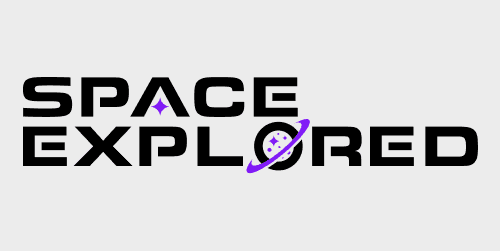
Update: A few hours before launch Boeing announced that the launch was postponed due to issues with “unexpected valve position indications” used in the propulsion system.
After the missed opportunity to dock with the International Space Station due to a timer issue on its first flight a second test flight was needed. Boeing will be performing their second orbital flight test for their Starliner crew capsule as soon as Friday to dock with the ISS. This will also serve as the final test before NASA puts crew onboard to determine if it’s ready.
Date: Tuesday, August 3rd at 1:20 p.m. EDT
Rocket: United Launch Alliance Atlas V N22
Capsule: Boeing’s CST-100 Starliner (S2.1)
Launch Pad: SLC-41, Cape Canaveral Space Force Station
Landing Site: The Atlas V rocket will be expended into the Atlantic Ocean.
About Boeing’s Starliner capsule
Boeing CST-100 Starliner crew capsule was one of two capsules developed for NASA’s Commercial Crew Program. Boeing relied on their heritage of building most of the US’s space fairing vehicles when designing in developing the capsule. With a similar look to the Apollo capsule but using similar thermal blankets and tiles that are used on the X-37B and Space Shuttle.
The capsule’s first orbital flight test was conducted in 2019 but failed to reach the ISS due to a timer issue. Another issue was found on the capsule and fixed before reentry, this issue could have led to the loss of the vehicle. While arguments were made that the issues could have been resolved if astronauts were able to take control, it was decided that Starliner will perform a second orbital flight test at Boeing’s expense.
Specifically, this capsule is Boeing’s second Starliner, it will be its first flight to space. Spacecraft 3 (Calypso/S3.1), which flew on OFT-1, will fly again for the first crewed mission.
About ULA’s Atlas V rocket
The Atlas rocket has been a workhorse for the United States military and NASA. The Atlas V family tree goes back to the late 1950s as one of the US military’s first ICBMs. The military quickly determined liquid-fueled rockets were better suited in the satellite business and the Atlas launcher was born. Throughout its history, it was used for project Mercury, Gemini, and for some of the most important scientific and national security missions.
What is an Atlas V N22?
The modern version of the Atlas is a two-stage design with up to 5 solid rocket boosters on the side. It is optimized for national security launches but has several commercial contracts with Boeing and Amazon. This variant of the rocket is an N22, this is a unique variant only used so far with Boeing’s Starliner. The first digit designates the fairing size, since Starliner does not use a fairing this is denoted with the letter N. The second digit stands for the number of solid rocket motors (SRBs) being used. This can be between 0-5 and for this mission, we have 2. The third and final digit shows how many RL-10 engines are installed on the Centaur upper stage. While the majority of the time ULA only launches with a single-engine installed, for Starliner we will always have 2 for redundancy.
ULA Launch Weather
Due to issues with the new Nauka module on the ISS and a classified military operation happening along the space coast, the launch was push back several days. The delay does give a better chance of good weather for the launch bringing the launch time further away from the regular mid-afternoon storms of Florida. Space Launch Delta 45 gives ULA and Boeing now a 60% probability of good weather. The same concerns persist with cumulus clouds, surface electric fields, and lightning rules all having a chance to violate the launch criteria.
The backup date on Wednesday, August 4th shows similar weather concerns. Each day the launch moves a little bit earlier which should bring more stable weather. Although it seems this week we will see an increase in storms.

Boeing OFT-2 launch updates
Tuesday, August 3rd, 11:06 a.m. EDT: Boeing announced the launch will be postponed pending review of an “unexpected valve position” issue found within the propulsion system. While the backup date is tomorrow, August 4th. Boeing will not be updating the press on the next launch opportunity until tomorrow, giving a small chance a Wednesday launch will happen.
“We’re disappointed with today’s outcome and the need to reschedule our Starliner launch. Human spaceflight is a complex, precise and unforgiving endeavor, and Boeing and NASA teams will take the time they need to ensure the safety and integrity of the spacecraft and the achievement of our mission objectives.”
John Vollmer, vice president and program manager, Boeing’s Commercial Crew Program
Some sources have stated software issues could be at play as well. But these are unconfirmed by Boeing or NASA. More information to come following Boeing’s announcement tomorrow.
Read More
- Boeing’s OFT-2 mission completes its Flight Readiness Review before launch
- Astronaut visits ULA’s facilities and shows off their wonky elevator floors
- Who makes the cut for FAA Astronaut Wings?
Want to help support Space Explored?
Shop on Amazon to support Space Explored writers.
Directly support Seth by becoming a member of their Patreon.
Enjoy reading Space Explored?
Help others find us by following on Apple News and Google News. Be sure to check us out on YouTube, Twitter, Facebook, and Instagram, join our Discord!
FTC: We use income earning auto affiliate links. More.



Comments